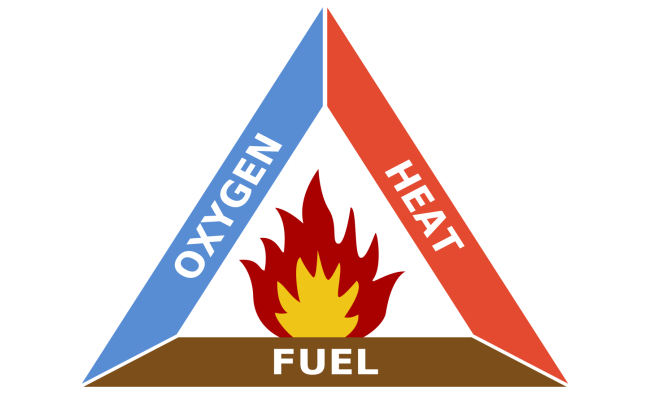Sustainable development is a concept that combines economic and social development with environmental preservation.
Sustainable development is based on the preservation of natural resources for future generations, as defined by the United Nations:
Sustainable development is one that meets present needs without compromising the ability of future generations to meet their own needs.
Currently, the economic production model is based on the high consumption of non-renewable natural resources, which may result in scarcity of these resources in the future.
in addition to the resource exhaustion, the current economic model causes immense environmental impacts and reproduces the poverty and the social inequality.
Thus, sustainable development goes beyond the preservation of natural resources. It aims to improve the quality of life of populations, social justice, economic equity and the reduction of hunger and poverty.
To achieve these goals, it is necessary to establish strategies and policies to save resources and change consumption patterns.
know more about preservation of the environment.
Sustainable development in Brazil
Sustainable development is a guarantee provided for by the 1988 Constitution, which in its article 225 determines:
Everyone has the right to an ecologically balanced environment, a good for common use by the people and essential to the healthy quality of life, imposing on the public power and the community the duty to defend it and preserve it for the present and future generations.
This definition is in line with what was proposed by the UN and places on the State and the community the responsibility for defending and preserving natural resources.
Despite the great biodiversity and biomes of global importance, Brazil is a country that still needs to undertake many efforts in favor of sustainable development, as it presents high levels of environmental degradation environment.
In addition to the devastation of forests and ecosystems, the high emission of carbon dioxide into the atmosphere and pollution, Brazil is one of the countries with the greatest social inequality on the planet.
According to IBGE, there are in Brazil more than 50 million people living in poverty - with income less than R$ 406 per month. And more than 15 million in extreme poverty - with income of less than R$ 140 per month.
understand what it is sustainability.
Sustainable Development Goals (SDGs)
In 2015, the United Nations defined 17 goals for sustainable development. These goals are valid until the year 2030 and should guide internal policies in countries and international cooperation actions.
The SDGs are:
- Eradicate poverty
- eradicate hunger
- quality health
- quality education
- Gender equality
- Clean water and sanitation
- Renewable and accessible energy
- Decent work and economic growth
- Industries, innovation and infrastructure
- Reduction of inequalities
- Sustainable cities and communities
- Responsible consumption and production
- Action against global climate change
- life on water
- terrestrial life
- Peace, justice and effective institutions
- Partnerships and means of implementation
Learn more about UN.
Sustainable development history
The concept of sustainable development was first presented at the United Nations Conference on the Environment, held in 1987 in Stockholm, Sweden.
This was the first time that economic development and the preservation of the environment were thought of together. Until then, these aspects were treated separately.
But it was in 1983, with the creation of United Nations World Commission on the Environment and Sustainable Development, that the concept of sustainable development was elaborated.
This commission aimed to study the negative impacts of human activities on the environment and also ways to combine economic growth with the preservation of the environment.
The result of this research and the definition of sustainable development were presented in the report prepared by the commission, called "Our Common Future".
The concept of sustainable development defined on that occasion was used as a foundation at the United Nations Conference on the Environment and Deforestation, the ECO-92, held in 1992.
During ECO-92, discussions were held and proposals were drawn up for environmental issues, such as preserving biodiversity and combating climate change.
Later, other meetings at the international level took place with the aim of evaluating and establishing goals for the preservation of the environment, see some examples:
- Kyoto Protocol: is an international treaty, which entered into force in 2005 and aims to reduce the emission of greenhouse gases.
- COP-15: the Conference of the Parties on Climate was held by the United Nations Framework Convention on Climate Change, which happened in 2009, discussed the causes of global warming and established strategies to contain the average temperature of the planet.
- COP-21: COP-21 was the Conference of the Parties, where it returned to discuss climate change and whose The work resulted in the Paris Agreement, which outlined objectives to maintain the average temperature of the planet.
Understand the relationship between the greenhouse effect and global warming.
Measures for sustainable development
In order for environmental resources to be preserved and nature to be protected, several measures must be adopted by governments, see some examples:
- Reduced deforestation and forest degradation;
- Reforestation of areas degraded by human activities;
- Establishment of environmental protection areas;
- Proper disposal of garbage;
- Decrease in the emission of greenhouse gases and other pollutants;
- Clean energy sources.
See too 7 ways to preserve the environment and environmental sustainability.
sustainable development and green economy
It is crucial that political positions are taken that promote a green economy, that is, an economy that is geared towards environmental protection.
Thus, investment in renewable energies (such as wind and solar energy), recycling, biofuels, solid waste management, etc., is essential. It is equally important to reduce greenhouse gas emissions and to encourage and instruct the population to reduce the use of individual transport.
know more about sustainable consumption and see examples of sustainability.



